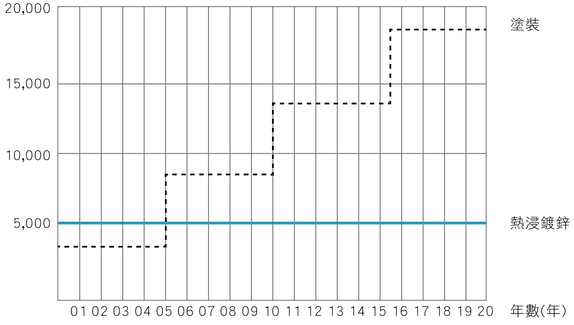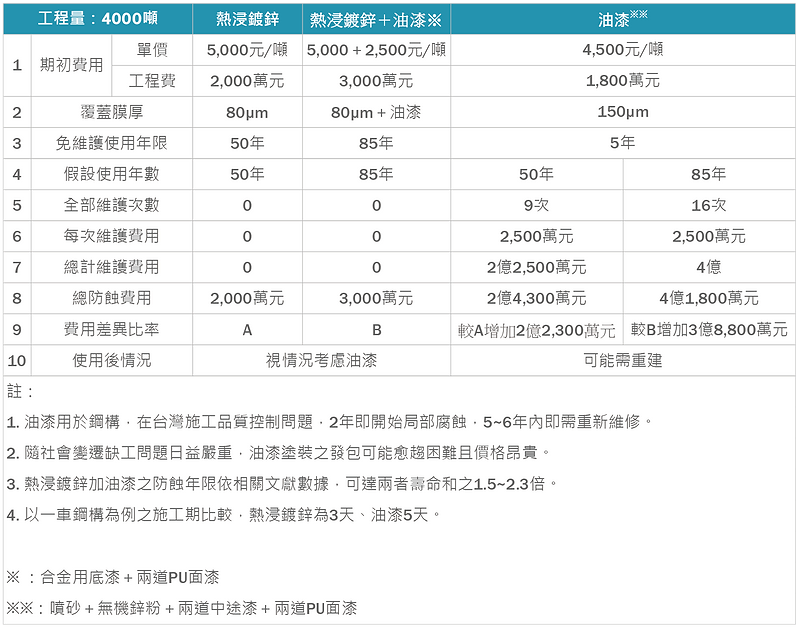Economic Benefit Analysis
Analyse and compare
01
Considerations in selecting rust prevention systems are often based on economics. However, the initial cost often does not represent the overall cost required for various types of anti-rust systems.
Maintenance costs may vary significantly from system to system. If it is difficult to get close to the workpiece during maintenance, or the operation needs to be stopped, or additional products and machinery are required to cover the work, or scaffolding needs to be set up, etc., all of the above operations can significantly increase the cost of maintenance.
Since the size of the structure or work may affect the ease of treatment, it also affects the price of galvanizing. Unfortunately, it is not yet possible to establish the cost of galvanizing according to universal standards, but the same is true for other surface treatment systems.
Usually the cost of galvanizing is calculated based on the weight of the workpiece. This point is different from the general method of pricing based on surface area. In Europe, the initial cost of hot-dip galvanizing will be lower than that of painting, because painting consumes more labor costs than galvanizing.
When comparing the total cost of various corrosion protection systems, the intervals between individual maintenance requirements may vary. Comparisons therefore become quite complex. Maintenance costs may vary even between maintenance intervals. Therefore, the long-term corrosion protection life provided by galvanizing, coupled with the excellent characteristic of not affecting the corrosion resistance even if small damage occurs, makes hot-dip galvanizing more economical than other surface treatment methods from the perspective of long-term corrosion protection. , more convenient.
The total cost of a corrosion protection system is closely related to factors such as service life, labor costs, additional costs for the complexity of maintenance work, and interest rates. The initial cost of hot-dip galvanizing is higher than that of painting, but the long-term total corrosion protection cost is lower than that of painting. The more complex the shape of the workpiece, the larger the surface area per unit weight. The cost of galvanizing will be very competitive compared with painting. Moreover, galvanizing can be completed in a short time without the cost burden caused by the risk of delay in on-site construction. . The above reasons coupled with the long corrosion protection life make hot dip galvanizing corrosion protection the most competitive method in engineering.
In terms of long-term economic benefits, hot-dip galvanizing corrosion protection operations. It is the best among all other anti-corrosion systems. Although the initial investment cost may be slightly higher than other systems, because it does not require maintenance for a long time, the total cost is much lower than other systems, (as shown in Figure 1 below).

Figure 1: Comparison of hot-dip galvanizing and painting costs over 20 years
Comparison of economic benefits between hot-dip galvanizing and painting for steel structures
02


